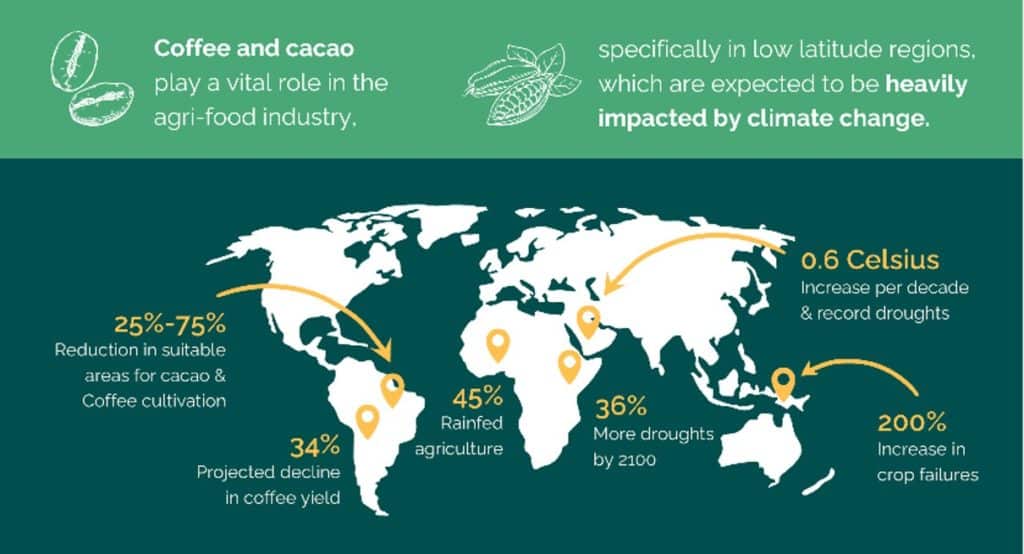Of all the global corporations, F&Bs have the opportunity to make one of the largest impacts on the environment. Their operations literally touch every continent, every country, and most of the world’s land. Regenerative agriculture is one major way F&Bs can do their part in addressing global climate change.
Regenerative agricultural practices not only stabilize the supply chain, but they also impact the global environment – and F&Bs are becoming the driving force in promoting them. They are sharing best practices with their smallholder farmers, encouraging them to take a holistic approach, considering the requirements of land, plants, animals, and humans.
Regeneration agriculture
- Ensures more efficient water usage
- Increases biodiversity
- Enriches soil while reducing erosion
- Minimizes or completely eliminates the use of chemical pesticides, herbicides, and fertilizers
In addition to the better-known techniques of crop rotation, composting, cover crops, and minimal till farming, several other techniques facilitate regenerative agriculture:
- Organic farming practices, including pest control
- Holistically planned ecological aquaculture
- Permaculture design
- Biochar
- Perennial crops
- Silvopasture
F&Bs are participating in a variety of programs to encourage regenerative agriculture, such as making sure their smallholder farmers achieve specific KPIs to gain certification from organizations like 4C, the Rainforest Alliance, and others.
By driving the adoption of regenerative agriculture, F&Bs strengthen their brands in the mind of the consumer. Consumers are increasingly seeking out and patronizing companies that have visibly demonstrated a “green” focus.
In addition, regulations are under discussion in the United States and EU that will legislate specific regenerative agricultural practices. For example, in America, the five-year US Farm Bill expires in 2023, and the new version is expected to include a focus on regenerative agriculture. In addition, organizations like Regenerative Organic Certified are now offering specific certification frameworks.
Technology is one way that F&Bs can more quickly spread regenerative agricultural practices. Giving smallholder farmers access to modern data and agricultural intelligence tools allows them to better use data for decision-making. Furthermore, F&Bs can create a variety of models based on collating and analyzing data from their smallholder farmers. Using the models, they can provide their smallholder farmers with actionable insights to increase yields and reduce resource usage.
By using data to connect with their smallholder farmers, F&Bs will have greater insights into the “facts on the ground,” knowing exactly what is happening in the fields. With comprehensive knowledge, the F&Bs can make better decisions about crop quality and yield expectations. They’ll also be able to better plan collection and shipping logistics, processing, and operational activities – leading to lower costs and higher quality. Furthermore, the holistic view of the data makes it much easier to track accountability at every level of the supply chain -from granular details such as the health of the soil to the wellbeing of their growers all the way to the quality of the end products purchased by the consumers and the carbon effects on the world itself.
As the driving force behind regenerative agriculture, F&Bs have the power to make a major impact on climate change. They have the resources and stability as well as the long-term vision necessary to guide and execute these changes. Not only will their efforts benefit their own operational continuity, but it will also have a major impact on the lives of the growers, global food availability, the “average” consumer, and the environment.








